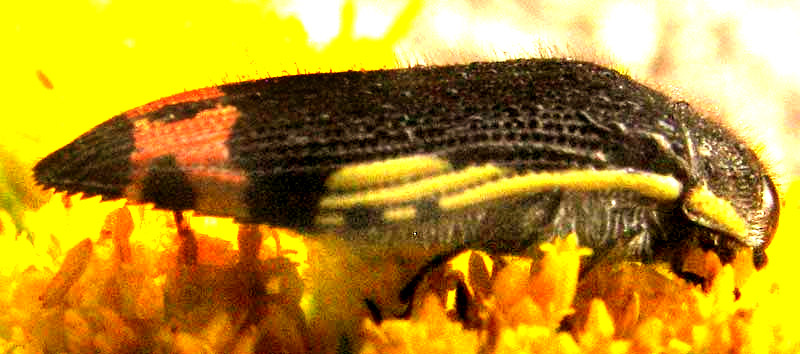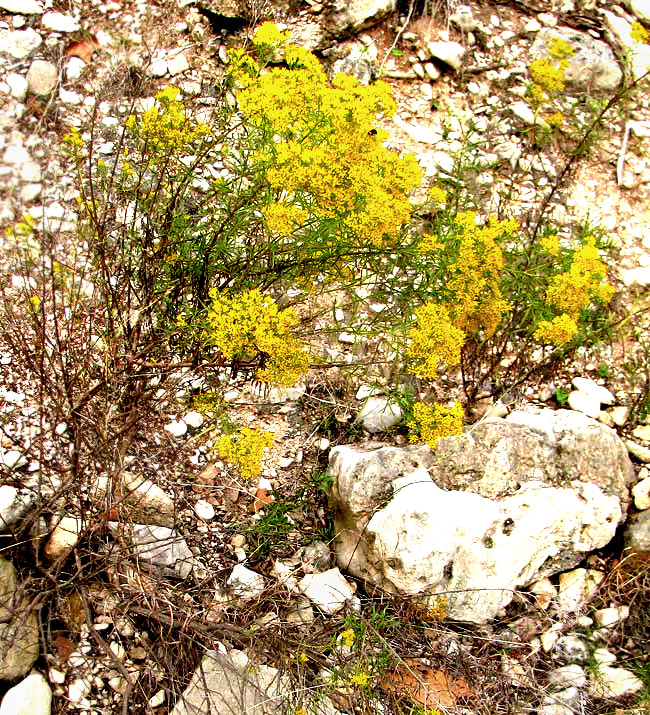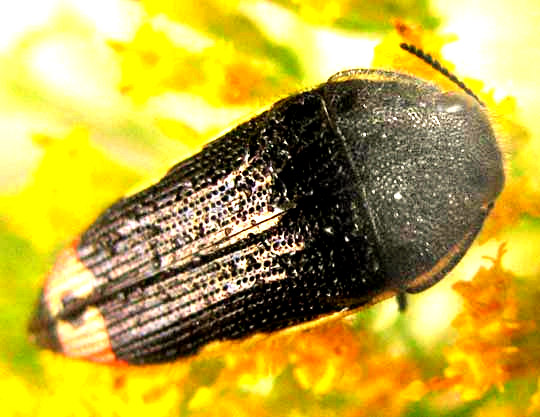Excerpts from Jim Conrad's
Naturalist Newsletter

from the November 3, 2013 Newsletter issued from the Frio Canyon Nature Education Center in the valley of the Dry Frio River in northern Uvalde County, southwestern Texas, on the southern border of the Edwards Plateau; elevation ~1750m (~5750 ft); N29.62°, W99.86°; USA
YELLOW-BORDERED FLOWER BUPRESTID
A firefly-size, black beetle conspicuously occupied the center of a flattish, hubcap-size cluster of yellow Goldenbush flowers, as shown below:

Up close, the beetle turned out to be one of those wrong-headed ones, with markings at the rear causing predators to attack that end instead of the more vulnerable head end. In its picture below, notice the antennae and eyes on the drab head end at the right.

If you're familiar with the daytime appearance of fireflies or lightning bugs, you'll recognize that this beetle is mimicking one of those. The red blotch across the beetle's rear end is very similar to such patches on the front ends of fireflies. The picture at the top of this page shows yet another similarity with fireflies, which is that the beetle's yellow side streaks imitate the yellow, flashing abdomen of a firefly.
Volunteer bug identifier Bea in Ontario quickly pegged this impersonator beetle as ACMAEODERA FLAVOMARGINATA, often listed in books as the Yellow-bordered Flower Buprestid, the term buprestid designating the beetle family to which it belongs, the Buprestidae. Some 15,000 buprestid species are commonly known as jewel beetles or metallic wood-boring beetles. Those names reflect the fact that members of this family often are spectacularly colored and frequently iridescent. They are prized by collectors, and in certain Asian countries even are used traditionally in "beetlewing jewelry."
Why should a beetle want to look like a firefly? It's because fireflies contain compounds called lucibufagins that apparently make them very bitter to potential predators. American Toads have been observed spitting out fireflies.
Our Yellow-bordered Flower Buprestid is mostly a tropical American species, found from Brazil north through Mexico, and extending into the US only in central and western Texas.